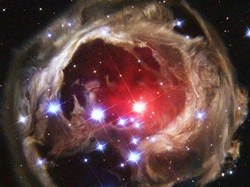 GIZMODO– The total number of stars in the Universe “is likely three times bigger than realized.”
Yale University astronomer Pieter van Dokkum says there are “possibly
trillions of Earths orbiting these stars,” dramatically increasing the possibility of finding alien civilizations.
GIZMODO– The total number of stars in the Universe “is likely three times bigger than realized.”
Yale University astronomer Pieter van Dokkum says there are “possibly
trillions of Earths orbiting these stars,” dramatically increasing the possibility of finding alien civilizations.
According to the new study just published in Nature, new observations on the red end of the optical spectrum at the W. M. Keck Observatory in Hawaii show an overwhelming population of red dwarfs in eight massive nearby elliptical galaxies. The team has discovered that these galaxies hold twenty times more red dwarfs than the Milky Way.
Van Dokkum says that “there are possibly trillions of Earths orbiting these stars” which are “typically more than 10 billion years old.” According to him, that’s long enough for complex life to evolve, which is “one reason why people are interested in this type of star.” In fact, astronomers discovered the first exoplanet similar to our own Earth—and therefore capable of harboring complex life—orbiting the Gliese 581 red dwarf star system, 20.3 light years from our home planet.
Carl Sagan explains why this discovery has a dramatic impact in our search for intelligent life in the Universe, using the Drake Equation:
Continue reading about Probability of Finding Aliens Is Now Three Times Higher.
© Gizmodo, 2010
Photo by flickr user Temari 09










